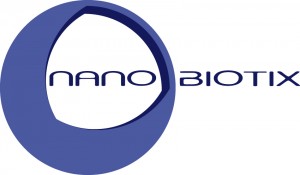News
Food for Thought: Weekly Wrap-Up
Ulrike von Leszczynski in Die Welt introduces a novel submersible which can dive up to 6 kilometers deep but weighs only 500 kg. The 3,5 meter long “autonomous underwater vehicle” named DNS Pegel does not need a pressure chamber as it is being flooded when diving. Instruments and electronics have been developed to withstand the conditions and most are protected by silicone.
In Der Spiegel, Steve Ayan, editor-in-chief of Gehirn & Geist, interviews Florian Holsboer, director of the Max Planck Institute of Psychiatry who explains how and why psychiatry will be revolutionized by tailor-made, personalized medicine to treat conditions such as anxiety, depression and others. Holsboer explains that psychiatric diseases are caused by a complex interplay between genes and environment in which the environment also influences the pattern of genes involved in a certain condition at a certain point in time. In the future, he predicts, “we will be able to generate biochemical snapshots using genetic tests and biomarkers.”
Marc-Denis Weitze in Neue Zürcher Zeitung (NZZ) introduces efforts by scientists from the Max Planck Institute for Biochemistry in Martinsried, the Natural and Medical Sciences Institute (NMI) at the University of Tuebingen and the Department of Biosystems Science and Engineering of ETH Zurich in Basle to record the activity of neurons in neuronal networks – a challenging task as chips and electronics elements need to withstand salty solutions for months. The latest innovation is a chip providing 32,000 contact points on a 2.6 square millimeter area. Nicola von Lutterotti, also in NZZ, reports on US and Swiss studies looking into the causes of hospitalizations. In Switzerland, up to 7% were due to overdosing of medications (either by doctors or accidentally by patients) or prescriptions of medications without observing warnings on potential interactions given on the label.
In the New York Times (NYT), Nicholas Wade reports on the successful genetic therapy of six patients with hemophilia B. The disease was corrected by transferring a working version of the factor IX gene via the adeno-associated virus-8 (AAV-8). The article points out that the therapy did not work or ceased to work in some of the patients. In other patients, the factor IX is produced in sufficient quantities for up to 22 months so that they can live without medications.
The New Scientist this week features a study by researchers from the University of Freiburg, Germany, in which symptoms of multiple sclerosis (MS) have been reverted in mice by injecting RNA oligonucleotides that stimulate the expression of interferon-B (IFNb). IFNb is known to be efficacious in humans with MS. However, 80% of people treated with IFNb injections develop antibodies against IFNb. If produced by the body itself the problem might be avoided.
And finally, “self-hacking” can be dangerous to your health, reports Klaus Vogt in Die Welt. Self hackers are promoting the “Quantified Self” movement and are recording, rating and sharing a wealth of body functions – from weight and blood pressure to feelings and data on sex and meditation – on a daily or even more frequent basis. While the movement already finds interest among medtech companies and data providers, medical professionals now warn that the underlying condition can become addictive. The akampioneer recommends software developers should program a meta app analyzing the quantified self data so that an addiction value can be posted on top.

